This article was co-authored by wikiHow staff writer, Jennifer Mueller, JD. Jennifer Mueller is a wikiHow Content Creator. She specializes in reviewing, fact-checking, and evaluating wikiHow's content to ensure thoroughness and accuracy. Jennifer holds a JD from Indiana University Maurer School of Law in 2006.
There are 10 references cited in this article, which can be found at the bottom of the page.
This article has been viewed 36,331 times.
Learn more...
If you suffer from depression, anxiety, or another mental disorder, an emotional support animal (ESA) may help keep you calm and tethered to reality. However, ESAs are not service animals. Rather, they are pets that a therapist or psychiatrist has determined will help alleviate the symptoms of a recognized mental disorder. The only legitimate way to have your pet classified as an ESA is with a letter from the mental health professional who is treating you for a diagnosed mental disorder. With this letter, you may be able to keep your ESA with you in places where animals ordinarily aren't allowed, such as in no-pets housing or in the cabin of an aircraft.[1]
Steps
Talking to Your Doctor or Therapist
-
1Schedule an appointment with your health care provider. You could simply go to your primary care physician, or to any doctor. However, the person in the best position to write an ESA letter for you is the mental health professional who is treating you for your mental disorder.[2]
- When you call to schedule the appointment, let them know that you want to talk to them about getting an ESA letter. That way you're not putting them on the spot when you show up for the appointment.
-
2Describe specifically your need for the letter. In the US, ESA letters may be used for 2 distinct purposes. Either you want to bring your animal with you in the passenger cabin of an aircraft, or you want to be allowed to keep your animal with you in no-pets housing.[3]
- Different situations may call for different reasons you need to have your pet. For example, if you have anxiety and a pathological fear of flying, your therapist might be able to write you an ESA letter to have your animal in the cabin of an aircraft. However, those same reasons wouldn't justify your need for your animal in no-pets housing.
Advertisement -
3Explain how your pet eases the symptoms of your disorder. While your health care provider doesn't have to name the disorder you have, they do need to be able to describe how your animal helps you manage your symptoms. Often, the animal provides a calming effect.[4]
- For example, if you suffer from anxiety, your animal may help keep you calm or give you something to focus on when you feel a panic attack coming on.
- Your animal also may provide you with a sense of connection to reality or to the world. Being responsible for the animal's well-being may help keep you grounded.
-
4Provide your health care provider with a sample letter. You can find sample letters online to make sure that your health care provider includes all the information necessary for a valid ESA letter. Generally speaking, the letter must state that you have been diagnosed with a recognized mental disorder and that your ESA eases the symptoms of that disorder.[5]
- The Bazelon Center for Mental Health Law has a PDF of a sample letter you can download at http://www.bazelon.org/wp-content/uploads/2017/04/ESA-Sample-Letter.pdf. This letter meets all the necessary legal requirements.
- If the name of the recipient of the letter is known, the letter should be addressed to them specifically. Otherwise, a generic "to whom it may concern" letter is fine.
-
5Pick up your letter from your health care provider. Your health care provider may write your letter immediately, or they may have you come back for it. If you need it by a certain date, be sure and let them know that.[6]
- Once you get your letter, you're responsible for delivering it to the appropriate person. Before you give them your letter, make a copy of it for your own records.
Tip: Try not to get too upset if your doctor or therapist isn't willing to write you a letter. Ask why they won't write the letter – there might be something you could say or do to change their mind. You can also ask if they can recommend a colleague who would be willing to write the letter.
Requesting Reasonable Accommodation
-
1Draft a letter requesting reasonable accommodation. Although you can request reasonable accommodation in a face-to-face conversation, or even over the phone, a written letter is a better method. You can lay out the reasons for your request, and you have a record of it.[7]
- You can find sample letters online that you can use as guides. For example, the Disability Rights Center of Maine has several sample letters available at https://mainelse.org/sites/default/files/DRCSampleLetters.pdf.
- If you know the name of the recipient of the letter, address it specifically to them rather than using a generic salutation, such as "to whom it may concern."
- There's nothing wrong with emailing the letter. However, if you anticipate resistance to your request, you might want to take it in person or mail it using a trackable method.
-
2Discuss the matter with someone in charge. Whether you're requesting accommodation from your landlord, or want to take your ESA on a plane, make sure the person you're talking to has the authority to grant your request. Otherwise, you could be challenged later on. Give them your letter requesting reasonable accommodation, as well as your letter from your health care provider.[8]
- Make your request in advance, and as soon as possible. If you leave it to the last minute, you risk putting yourself and others in a difficult or awkward situation. Be respectful, and don't put anyone on the spot or make demands.
- You may get resistance because people have abused the privilege of having an ESA so they can keep their pets with them. the person you talk to may have had bad experiences previously with someone who had an untrained or disruptive animal.
Tip: Remember that you are not required to specify your mental disorder, nor is anyone allowed to ask. If you are asked the nature of your mental disorder, you can reply "I am not required by law to provide that information, and asking is a violation of my privacy."
-
3Get the results of your discussion in writing. If the person you talk to agrees to let you have your ESA with you, ask them to give you a letter to that effect on company letterhead. You can use this as an official document if anyone hassles you later on.[9]
- Make several copies of this letter to ensure you always have one handy. Keep this letter as well as a copy of the letter from your health care provider with you whenever you are in public with your ESA.
Tip: People are allowed to propose alternative accommodations, but you also have the right to refuse those alternatives. With a letter from your health care provider, US landlords and airlines are legally obligated to provide your requested accommodation.
-
4Pay any required fees or deposits to keep your ESA with you. Service animals are exempt from deposits or fees designed to cover damage to the property. However, an ESA is not exempt. If you're allowed to keep your ESA in no-pets housing, your landlord may ask you for an additional deposit.[10]
- You may also be required to pay a nonrefundable pet fee. If you're not able to pay the entire amount up front, find out if you can make installment payments over several months.
Training and Handling Your ESA
-
1Have your animal's temperament evaluated. Not every animal can handle being an ESA. Even though you may not treat the animal any differently than you would a pet, the demands on the animal are different. Generally, your animal should have a calm, even temper.[11]
- For example, if you have anxiety, you wouldn't expect a nervous chihuahua that had a high anxiety level itself to have a calming influence on you.
- If you've not yet adopted your animal, choose a breed with an appropriate temperament for being an ESA. For example, if you're looking for a dog, consider breeds often used as service animals, such as retrievers and German Shepherds.
Did You Know? Dogs may come to mind when you think about emotional support animals, but all creatures large and small can potentially be ESAs. There are mini pigs, cats, mice, rabbits, and even birds that are ESAs.
-
2Take your animal through basic obedience training courses. Particularly if you have a dog as your ESA, basic obedience training will ensure your dog behaves appropriately in public situations. For other types of animals, you may also be able to find training courses (although your options will likely be limited).[12]
- In some situations, you may be required to vouch for your ESA's behavior. For example, some airlines require ESA handlers to sign a written statement that their ESA is calm and well-behaved.[13]
-
3Ensure that your animal is housebroken. Service animals are required to be housebroken. Although ESAs aren't service animals, follow the same rule. Nobody welcomes an animal that is not housebroken and makes a mess or damages property.[14]
- If an accident happens, clean it up yourself as quickly as possible. No one else is responsible for taking care of or cleaning up after your ESA.
-
4Maintain control of your animal at all times. Service dog handlers are expected to have complete control over their animals. Even though ESAs are not service animals, you should still hold yourself to the same standard.[15]
- If your animal is calm and obedient, this shouldn't be a problem. If you have a cat, rabbit, or other animal that can't exactly be "trained," make sure you have the animal in a carrier or restrained in some way at all times when you're out in public.
-
5Follow established rules for handling your ESA. When you are permitted to have your ESA in no-pets housing or in a public place, there may be rules regarding what your ESA can and can't do, or where your animal is permitted to go. If you violate these rules, you may no longer be allowed to have your ESA with you.[16]
- For example, if you have a dog as your ESA, and your landlord requires dog owners to clean up after their animals outside, this applies to you as well. If you don't clean up after your dog, your landlord could evict you for a lease violation – regardless of your dog's status as your ESA.
Tip: Airlines may have additional restrictions regarding particular breeds of dogs or animals on longer flights. The airline will provide you with information about their policies – make sure you read and understand it before you board the plane to avoid any issues.
Warnings
- This article primarily discusses laws regarding service animals and emotional support animals in the US. If you live in another country, ask a veterinarian or a mental health professional how emotional support animals are regulated or controlled.⧼thumbs_response⧽
- In the United States, there is no "certification" for emotional support animals under federal law. There are numerous online companies that offer to sell you certificates, badges, and registration – typically for hundreds of dollars. These companies are scams.[19]⧼thumbs_response⧽
References
- ↑ https://www.psychologytoday.com/us/blog/animals-and-us/201602/8-misconceptions-about-therapy-service-and-support-animals
- ↑ https://www.psychologytoday.com/us/blog/animals-and-us/201607/emotional-support-animals-the-therapists-dilemma
- ↑ https://www.psychologytoday.com/us/blog/animals-and-us/201607/emotional-support-animals-the-therapists-dilemma
- ↑ https://screening.mhanational.org/content/how-do-i-get-emotional-support-animal/
- ↑ http://www.bazelon.org/wp-content/uploads/2017/04/2017-06-16-Emotional-Support-Animal-Fact-Sheet-for-Website-final.pdf
- ↑ http://www.bazelon.org/wp-content/uploads/2017/04/2017-06-16-Emotional-Support-Animal-Fact-Sheet-for-Website-final.pdf
- ↑ https://www.akc.org/expert-advice/news/everything-about-emotional-support-animals/
- ↑ https://www.animallaw.info/article/faqs-emotional-support-animals
- ↑ http://www.bazelon.org/wp-content/uploads/2017/04/2017-06-16-Emotional-Support-Animal-Fact-Sheet-for-Website-final.pdf
- ↑ https://www.humanesociety.org/resources/fair-housing-act-and-assistance-animals
- ↑ https://ct.counseling.org/2015/04/confirming-the-benefits-of-emotional-support-animals/
- ↑ https://ct.counseling.org/2015/04/confirming-the-benefits-of-emotional-support-animals/
- ↑ https://www.chicagotribune.com/business/ct-biz-delta-emotional-support-dog-behavior-20180119-story.html
- ↑ https://adata.org/publication/service-animals-booklet
- ↑ https://adata.org/publication/service-animals-booklet
- ↑ http://www.bazelon.org/wp-content/uploads/2017/04/2017-06-16-Emotional-Support-Animal-Fact-Sheet-for-Website-final.pdf
- ↑ https://www.animallaw.info/article/faqs-emotional-support-animals
- ↑ https://adata.org/publication/service-animals-booklet
- ↑ https://www.psychologytoday.com/us/blog/animals-and-us/201607/emotional-support-animals-the-therapists-dilemma
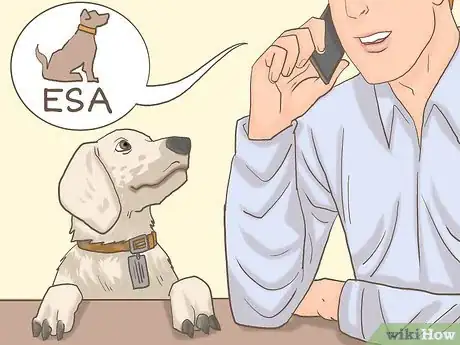
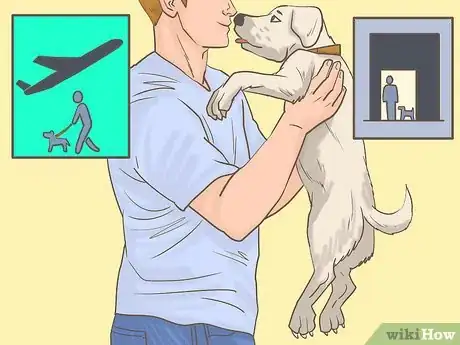

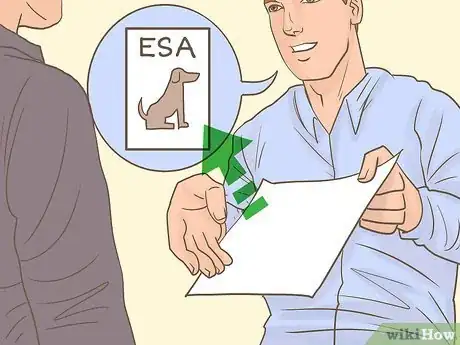
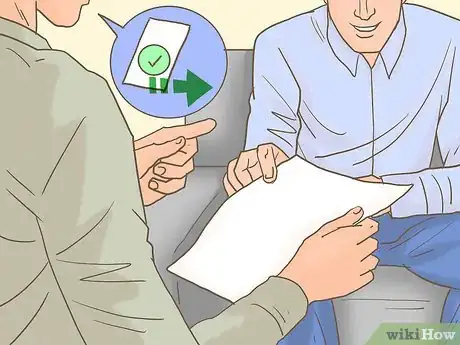

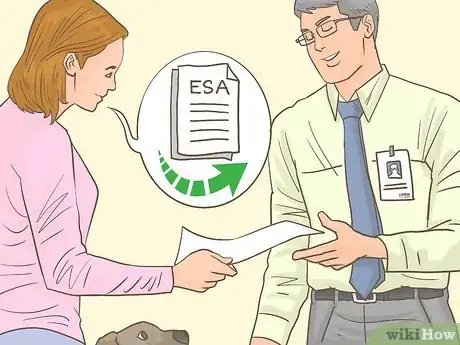
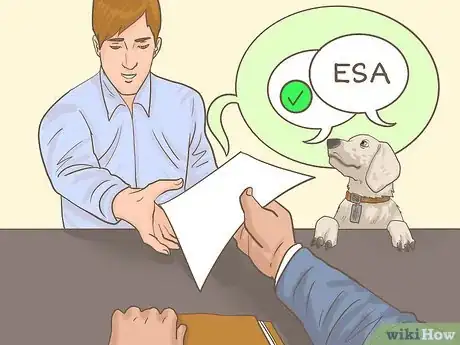


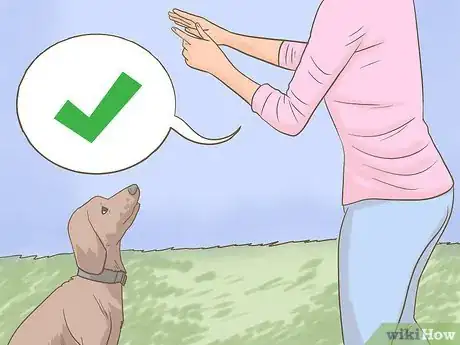
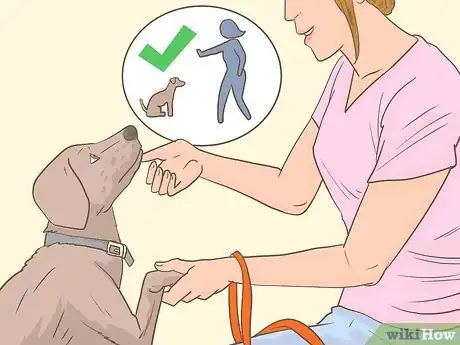
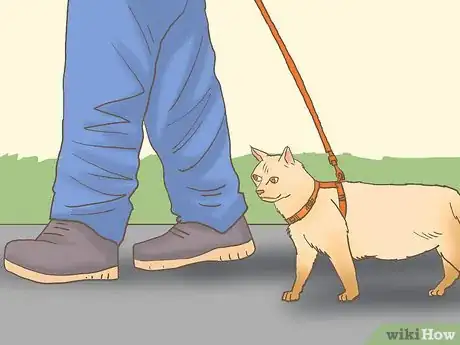
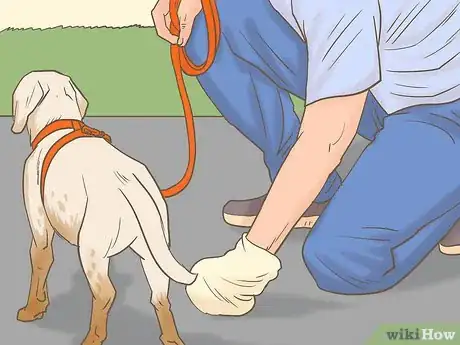





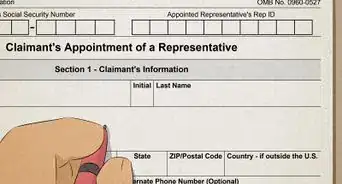






















































Medical Disclaimer
The content of this article is not intended to be a substitute for professional medical advice, examination, diagnosis, or treatment. You should always contact your doctor or other qualified healthcare professional before starting, changing, or stopping any kind of health treatment.
Read More...